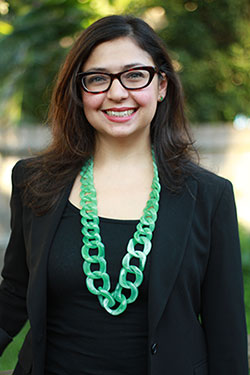News & Events
School of Art and Menil Collection launch the Diversity in the Arts Internship Program
Art history students eligible for nine-month paid internship in Menil’s curatorial department

The School of Art has partnered with the Menil Collection, the internationally celebrated museum created from the private collection of Dominique and John de Menil, to offer a new research opportunity for its undergraduate and graduate students in art history.
The new Diversity in the Arts Internship is a paid, nine-month internship in the Menil’s curatorial department which manages about 17,000 paintings, sculptures, decorative objects, prints, drawings, photographs, and rare books.
“We wanted to work with The Menil Collection because of its excellence – both in terms of artwork and personnel,” said Dr. Rex Koontz, Director of the School of Art. “We wanted our students to learn museum curation from the best, in an environment which has traditionally been one of the most innovative and provocative in the United States.”
The Menil Collection opened to the public in 1987 to preserve and exhibit the collection of classical, tribal, modern and contemporary art amassed by the de Menils. It is celebrated as one of the most important art collections of the twentieth century. Even before it was put on public display, the couple encouraged and supported historical research on their collection.
Starting in 1960, the de Menils financed a massive research project to build a photographic archive of every known Western art depiction from antiquity to the twentieth century of Africans and people of the African Diaspora. The Image of the Black in Western Art archive is now housed at the W.E.B. Dubois Institute for African and African American Research at Harvard University.
Earlier this fall, the first recipient of the new nine-month curatorial internship program was selected. Maurise Guillen is a second year graduate student working towards her Master’s degree in Art History.
The nine-month program is structured to allow Guillen to balance her classwork and internship demands. She works a couple days a week at Menil, and attends classes the remainder of the week. And she’s earning course credit for the days that she’s doing research at the Menil.
“Most internships are only three months long, so it’s hard to get much out of the experience,” said Guillen. “Because this one is nine months long, I have a unique opportunity to work on long-term projects.”
Guillen’s specific educational goal upon entering the graduate program at the UH School of Art was to study Latin American Art. She earned her undergraduate degree in Art History at Loyola University in Chicago.
“UH is a top-notch place to study Latin American Art at an English-speaking school,” said Guillen. “Plus, UH was closer to my family, and my hometown.”
She grew up in the Rio Grande Valley, on the Texas/Mexico border. In addition to visiting art exhibits across the United States, Guillen’s mother also took the family to art shows in Mexico. This experience is what piqued Guillen’s interest in Latin American art.
“I was exposed to Latin American artists, such as Frida Kahlo, from an early age,” said Guillen. “I am currently working on my thesis which examines saint iconography in late colonial Mexico.”
At Menil, Guillen is working alongside a curator and two other interns – a PhD student from Rice University and a graduate student from Hunter College in New York. This experience gives Guillen the opportunity to create a network with other emerging professionals; individuals she works with today will be her fellow curators and art experts in the art museum world.
“This has felt like curatorial boot camp,” said Guillen. “It has challenged me to think critically about artwork. But I have to remind myself not to get too caught up in the context… what was occurring in the world when the artist was developing the piece. Sometimes it is nice to just look at, and appreciate, the art.”
That’s a philosophy the Menil Collection embraces. There is no “wall text” next to art work displayed in the museum, “so the curator can’t influence the visitors’ thoughts,” said Guillen.
“This means the order and organization of the exhibition is extremely important – the pieces have to talk to each other,” she said.
“This experience offers real-world experience at the highest level of museum curating,” said Dr. Koontz. “Maurise is gaining experience in one of the finest art institutions in the country.”
- By Monica Byars